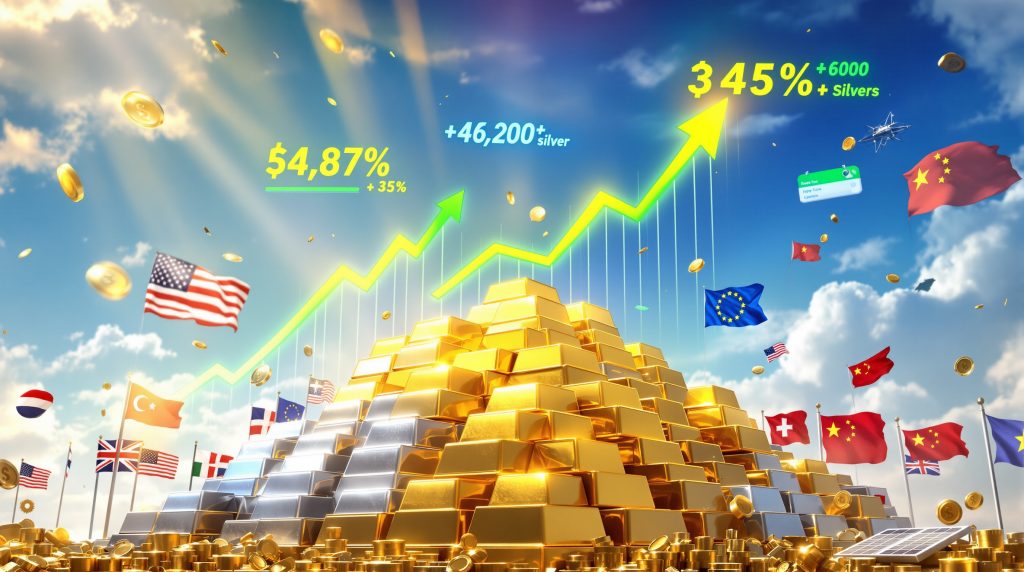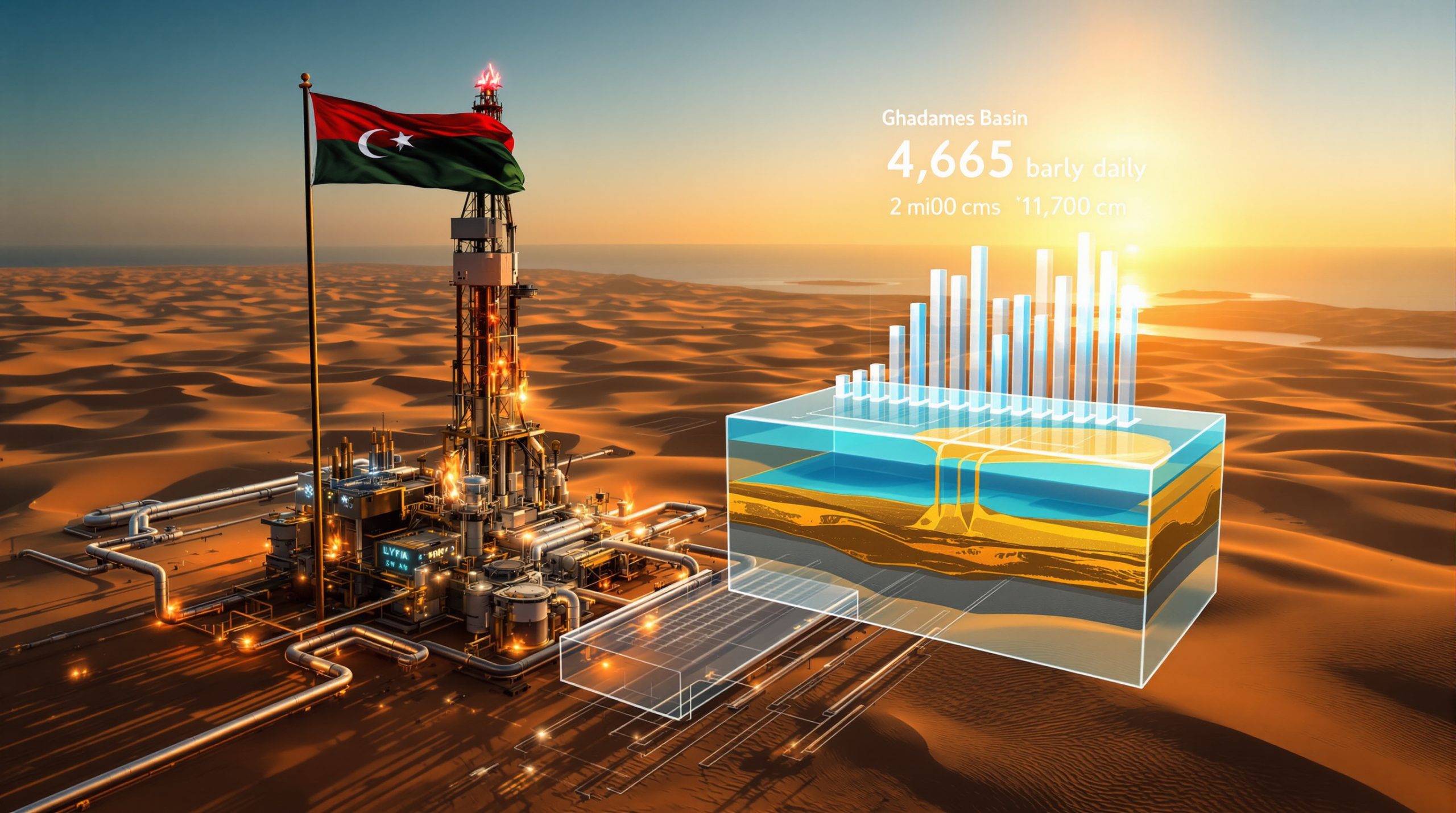Understanding the Historic Precious Metals Rally of 2025
The precious metals landscape has experienced extraordinary transformation throughout 2025, with both gold and silver price increase patterns achieving levels that have redefined market expectations. This unprecedented surge reflects a complex interplay of monetary policy decisions, geopolitical developments, and structural economic shifts that continue reshaping global investment strategies.
Gold's journey beyond the $3,000 milestone earlier in 2025 represented just the beginning of a remarkable ascent. By September 24, 2025, the metal reached $3,792.12 per ounce, establishing new all-time highs that exceeded most professional forecasts. This represents a staggering 44.5% year-to-date gain in USD terms, with momentum accelerating rather than moderating as prices climbed higher.
Silver's performance has proven equally compelling, achieving a 14-year high of $44.55 per ounce during the same period. The white metal now approaches critical historical resistance levels at $48.70 (2011 peak) and $49.45 (1980 all-time high), suggesting potential for breakthrough into uncharted territory above the psychologically significant $50 threshold.
Monetary Policy Foundations Driving Demand
Federal Reserve policy expectations continue providing fundamental support for precious metals appreciation. Market pricing mechanisms reflect overwhelming consensus regarding monetary easing, with the CME FedWatch tool indicating 94.1% probability of rate cuts scheduled for October 29, 2025.
This monetary backdrop creates conditions particularly favourable for non-yielding assets like bullion. When central banks maintain accommodative policies while inflation persists, real interest rates remain negative or negligible, making traditional yield-bearing investments less attractive on a risk-adjusted basis.
Key monetary drivers include:
- Sustained negative real interest rates across major economies
- Currency debasement concerns among institutional portfolios
- Portfolio diversification strategies emphasising hard assets
- Dollar weakness expectations correlating with rate cut probabilities
Employment and inflation data releases will remain crucial variables influencing Fed probability assessments in coming weeks. Furthermore, any developments that reinforce rate cut expectations could trigger additional dollar weakness, potentially providing further upside catalyst for precious metals markets.
Geopolitical Tensions Reinforcing Safe-Haven Premiums
International conflicts continue generating sustained demand for assets traditionally viewed as stores of value during uncertain periods. The ongoing Ukraine situation has evolved with President Trump signalling potential policy shifts, suggesting Ukraine could reclaim territory previously occupied by Russia. However, diplomatic efforts have produced limited results, while Russia's reported violations of NATO airspace maintain regional tensions.
These developments reinforce precious metals' historical role as portfolio insurance during geopolitically turbulent periods. The sustained nature of current international tensions, spanning multiple global regions, has created what analysts describe as elevated risk premiums embedded in precious metals pricing.
Perhaps most significantly for long-term monetary architecture, China has reportedly initiated discussions with allied nations regarding gold reserve custody arrangements. This development parallels historical roles played by the Bank of England in London and Federal Reserve in New York, potentially representing a structural shift away from traditional dollar-denominated reserve systems.
Cross-Currency Strength Demonstrates Broad Appeal
Gold's appreciation extends well beyond USD-denominated gains, indicating genuine metal demand rather than currency-specific dynamics. Multi-currency performance data reveals consistent strength across major trading pairs:
| Currency | All-Time High | Year-to-Date Gain | Milestone Significance |
|---|---|---|---|
| USD | $3,792.12 | 44.5% | Approaching $3,800 threshold |
| GBP | £2,800 | 34% | First-time breakthrough level |
| EUR | €3,200 (€102.99/gram) | 27.8% | Historical peak achieved |
Silver demonstrates similar cross-currency momentum, with GBP silver nearing £33 per ounce after establishing a new UK record of £32.90. Euro-denominated silver reached €37.71, marking an all-time high in European markets.
This broad-based strength suggests underlying demand transcends currency-specific factors, reflecting genuine conviction among international investors regarding precious metals' value propositions. In addition, this pattern aligns with our record gold prices analysis, which highlights similar global demand dynamics.
Silver's Dual Nature Creates Unique Dynamics
Silver's remarkable recovery reflects its distinctive position as both an industrial commodity and precious metal investment vehicle. Current levels approaching $45 per ounce position the metal within striking distance of historically significant resistance areas that could trigger further momentum.
Industrial applications driving physical demand include:
- Solar photovoltaic panel manufacturing requiring substantial silver content
- Electric vehicle component production utilising silver's conductive properties
- Advanced electronics and semiconductor applications
- Medical and antimicrobial technology implementations
The convergence of technological demand growth with traditional safe-haven buying creates supply-demand dynamics that analysts suggest favour sustained price appreciation. Unlike gold, which serves primarily as a store of value, silver's industrial applications require actual physical delivery, creating genuine supply constraints that financial markets must accommodate.
Historical price targets suggest significant upside potential:
- 2011 high: $48.70 per ounce (9.3% above current levels)
- 1980 all-time high: $49.45 per ounce (11.0% above current levels)
- Psychological milestone: $50.00 per ounce (12.2% above current levels)
For investors seeking to understand these dynamics better, our silver market squeeze insights provide detailed analysis of supply-demand imbalances affecting current pricing.
Technical Momentum Characteristics
The velocity of recent price appreciation has surprised market professionals, including those maintaining bullish outlooks. Monthly gains have accelerated rather than moderated as both metals reached higher price levels, suggesting underlying demand strength extending beyond speculative positioning.
Gold's progression from the $3,000 breakthrough earlier in 2025 to current levels near $3,800 occurred with minimal consolidation periods. Any price retreats have proven short-lived, with buying interest emerging during traditional profit-taking opportunities.
Market structure indicators suggest:
- Sustained buying pressure during historical consolidation periods
- Limited profit-taking despite substantial percentage gains
- Cross-currency strength confirming broad-based demand rather than USD weakness alone
- Momentum acceleration following summer consolidation phase
The pace of gains raises questions about potential selling pressure, yet market behaviour thus far indicates strong conviction among participants regarding long-term value propositions. However, as noted in our analysis of gold's $3000 milestone analysis, such rapid appreciation requires careful monitoring.
Supply-Demand Fundamentals Under Pressure
Physical precious metals markets face genuine supply-demand imbalances that provide fundamental support for elevated pricing levels. While financial market dynamics capture most attention, underlying physical market conditions suggest structural factors favouring continued strength.
Mining production growth appears to lag current price appreciation rates, though specific production data requires verification from industry sources. Refining capacity limitations may affect delivery timelines for both retail and institutional buyers, while inventory drawdowns at major storage facilities suggest genuine physical market tightness.
Investment demand patterns indicate:
- Retail and institutional flows maintaining consistency despite elevated prices
- Long-term conviction among market participants regarding value preservation
- Diversification strategies emphasising hard assets during monetary uncertainty
- International demand spanning multiple geographic regions and currency zones
According to expert analysis from The Fool Australia, some professionals tip gold to reach US$5,000, highlighting the potential magnitude of current supply-demand imbalances.
Professional Forecasts and Market Outlook
Leading financial institutions have revised precious metals projections upward multiple times throughout 2025, acknowledging that fundamental drivers supporting current trends remain structurally intact rather than cyclical.
Current market pricing already exceeds many professional forecasts issued earlier in the year, suggesting potential for continued upward revisions. The original consensus range of $3,675-$4,000 for gold through late 2025 has proven conservative, with current levels at $3,792 already approaching the upper end of previous projections.
Silver projections suggest:
- Near-term potential: $38-$40 range by year-end
- Extended outlook: Continued strength into 2026
- Breakthrough scenarios: Sustained movement above $50 could establish new trading ranges
However, several factors could influence future price trajectories and merit consideration for investors evaluating position sizing and timing decisions. For comprehensive guidance, our gold market investment strategies provide detailed frameworks for navigating current market conditions.
Risk Factors and Potential Market Headwinds
While fundamental conditions currently favour precious metals strength, several developments could alter market dynamics and should be monitored by investors considering exposure adjustments.
Potential headwinds include:
- Rapid economic recovery: Could reduce safe-haven demand if growth momentum accelerates beyond expectations
- Significant dollar strengthening: Major policy changes affecting currency relationships
- Large-scale institutional profit-taking: Coordinated selling by major holders could trigger technical corrections
- Alternative investment opportunities: Superior returns from competing asset classes could redirect capital flows
Additionally, commodity markets historically experience significant volatility in both directions. Past performance, regardless of duration or magnitude, cannot guarantee future results in precious metals markets.
Investment Considerations and Vehicle Options
Precious metals' effectiveness as portfolio diversifiers during financial market stress and currency devaluation periods has been demonstrated through multiple historical cycles. Current economic conditions share characteristics with previous periods when these assets provided valuable protection against monetary debasement and geopolitical uncertainty.
Modern investors access precious metals exposure through various methods, each offering distinct characteristics regarding storage requirements, liquidity provisions, and tax implications:
Physical ownership options:
- Bullion coins and bars for direct possession
- Allocated storage through professional vault services
- Home storage with appropriate security considerations
Financial instruments:
- Exchange-traded funds providing liquid exposure
- Certificates representing metal ownership claims
- Mining company equity positions offering leveraged exposure
- Futures and options contracts for sophisticated traders
Each approach involves specific trade-offs between control, convenience, costs, and regulatory considerations that should align with individual investor circumstances and objectives.
Portfolio Allocation Strategic Framework
Traditional portfolio theory suggests precious metals allocations of 5-10% of total investment assets, though current economic conditions may warrant higher percentages for investors seeking protection against monetary debasement and geopolitical risks.
Strategic allocation considerations:
- Conservative approach: 5-7% allocation focused primarily on gold
- Moderate approach: 8-12% allocation including both gold and silver exposure
- Aggressive approach: 15%+ allocation incorporating mining equities and physical metals
Risk tolerance, investment timeline, and overall portfolio objectives should guide allocation decisions. Investors should also consider rebalancing mechanisms to maintain target percentages as precious metals appreciate relative to other asset classes.
Consequently, those seeking comprehensive strategies should review our investment strategy guide for broader portfolio considerations beyond precious metals alone.
Market Psychology and Investor Behaviour
Current market dynamics reflect evolving investor psychology regarding traditional monetary systems and currency stability. The persistence of precious metals strength despite elevated absolute prices suggests conviction among participants that extends beyond short-term speculation.
This conviction appears rooted in structural concerns about:
- Fiscal sustainability: Government debt levels and spending trajectories
- Monetary credibility: Central bank policy effectiveness and independence
- Currency stability: Long-term purchasing power preservation
- Systemic risks: Financial system resilience during stress periods
The gold and silver price increase patterns observed throughout 2025 indicate these concerns resonate across diverse investor categories, from retail participants to institutional portfolio managers.
Regulatory and Systemic Considerations
Government policies regarding precious metals ownership, taxation, and reporting requirements vary significantly across jurisdictions and may influence investment decisions. Investors should understand applicable regulations in their domicile before establishing positions.
Additionally, proposed changes to monetary systems or reserve arrangements, such as China's reported gold custody initiatives, could have far-reaching implications for global precious metals demand and pricing mechanisms.
Monitoring developments in:
- Central bank policies: Rate decisions, quantitative easing programs, forward guidance
- Regulatory changes: Taxation, reporting requirements, ownership restrictions
- International agreements: Reserve currency arrangements, trade settlements
- Geopolitical events: Conflicts, sanctions, diplomatic negotiations
Recent warnings have emerged as SBS reports concerns about the rapid price appreciation in precious metals markets, highlighting the importance of careful consideration before investment decisions.
Conclusion: Navigating Unprecedented Territory
The convergence of monetary accommodation, geopolitical uncertainty, and supply-demand fundamentals has created an environment historically conducive to precious metals appreciation. The gold and silver price increase patterns witnessed throughout 2025 reflect structural factors that appear likely to persist rather than cyclical dynamics approaching resolution.
Current price levels, while elevated relative to historical norms, may represent early stages of a broader revaluation process if underlying economic and geopolitical conditions continue developing along current trajectories. However, investors must remain cognisant that markets can experience significant volatility and that past performance provides no guarantee of future results.
Key considerations for investors include:
- Position sizing: Allocation percentages appropriate for individual risk tolerance
- Investment vehicles: Selection of exposure methods aligned with objectives
- Rebalancing discipline: Maintaining target allocations through price appreciation
- Risk management: Understanding potential headwinds and market volatility
The precious metals landscape of 2025 has demonstrated that traditional assumptions regarding price ceilings and market behaviour may require reassessment. Investors considering exposure should evaluate their circumstances carefully whilst recognising that commodity markets inherently involve substantial risks alongside their potential benefits.
This analysis is provided for educational purposes and should not be construed as investment advice. Precious metal prices can be volatile, and values may decline as well as appreciate. Investors should conduct independent research and consider consulting with qualified financial professionals before making investment decisions.
Looking to Capitalise on Precious Metals Discoveries?
Discovery Alert's proprietary Discovery IQ model delivers real-time notifications on significant ASX mineral discoveries, including precious metals opportunities that could benefit from the current unprecedented market conditions. Explore Discovery Alert's discoveries page to understand how major mineral finds have generated substantial returns, then begin your 30-day free trial to position yourself ahead of the market during this historic rally.




